Reclaimed Fluff Pulp
Recyc PHP produces about 4,000 metric tons of bales of fluff pulp recovered from industrial rejects of personal care products (waste from baby diapers, adult incontinence briefs or sanitary napkin producers). These cellulosic fibers, also called fluff pulp, comminution pulp or fluffy pulp was originally extracted from the US southern softwood by chemical and mechanical methods then bleached (Process pulp and paper). These fibers have the characteristic to be particularly long for paper fibers in addition to having an interesting absorbency.
Reclaimed Fluff Pulp Characteristics
- Sold in bales or in pellets
- Requires less energy for defibrillation (already in fibers) – debaler and metering feeder are needed
- Rapidly absorbs up to 10 time its weight in water
- Contributes to a good core integrity
- Allows a good liquid distribution to increase the efficiency of the absorbent polymers
- Whiten fibers
- Has an insulating power 11 cm of fiber is required to obtain a surface heat resistance 3 m² k/w
- Numbered bales allowing the traceability of the fibers origin for a constant quality
FAQ
What is the difference between fluff pulp in rolls and fluff pulp in bales?
Virgin fluff pulp is initially sold in rolls. Diapers manufacturers that use fluff pulp in rolls need to process the material through a hammermill to produce short fibers that will enter in their products.
Recyc PHP reclaims fluff pulp that has already been processed through a hammermill. The only way we can sell those fibers is by compacting them with a baler. Then, our fluff pulp is sold in bales instead of in rolls.
Click here to know how to use fluff pulp in bales.
What are the main differences between the different grades of fluff?
FCB-M85P : 10–15% SAP, bigger bales (2,1 m long – 380 kg per bales), 14,5 MT per 40 HC containers
FCB-M85PNS : 2% SAP, smaller bales (1,5 m long – 180 kg per bales), 12,6 MT per 40 HC containers
Why Recyc PHP uses EXW, FCA or CPT terms instead of FOB or CFR terms?
Since 2010, new incoterms have been put in place for the international commerce. Recyc PHP uses the new incoterms in accordance with the new regulation. You can find more details about incoterms on Wikipedia.
THE REQUIRED PRODUCT THAT WILL BEST SUIT YOUR NEEDS
Product specification sheets
PHP Product Number : FCB-M85PPRINT
Go to store
First Grade Fluff Pulp
Description
First grade fluff pulp is recovered from industrial rejects of personal hygiene products such as adult incontinence briefs, baby diapers, and sanitary napkins.
Specifications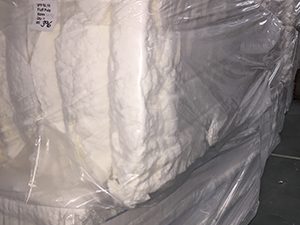
- Brightness 80 - 94%
- Average fiber length 1.0 - 2.5 mm
- Network strength 5.5 - 6.5 N
- Absorption time 3.5 - 5.0 sec
- Absorption capacity Around 50 g/g
- Contains around 15% of sodium polyacrylate
- Contains fewer than 1% plastic particles or elastics
- Bales are protected with plastic bags to avoid any contamination
- HS Classification code of the fluff pulp: 4706.20.0000
Weight and Bale Sizes
Average of 390 kg (860 lb)
800 mm x 900 mm x 2 m long (32 in x 36 in x 80 in long)
Possible Usages
The 1st grade fluff pulp has the same properties as virgin fibers containing sodium polyacrylate and can be used again in the production of personal hygiene products. These fibers allow for a quality product and reduce the need of adding sodium polyacrylate. Since the distribution of the absorbing polymers will be less constant it is recommended mixing the reclaimed fibers to virgin fibers.
Shipping Information
14.5 metric tons in a 40 feet “high cube” container
20 metric tons in a 53-foot trailer
Our plant is located at 100 km from the Montreal Port.
PHP Product Number : FCB-M85NSPRINT
Go to store
First Grade Fluff Pulp Low Absorbent Content
Description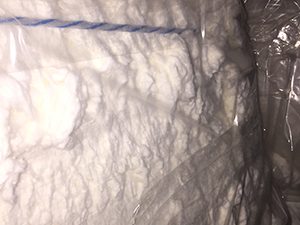
First grade fluff pulp with a low percentage of super-absorbent polymers are recovered from industrial rejects of personal hygiene products such as adult incontinence briefs, baby diapers, and sanitary napkins, then clean to remove almost all the sodium polyacrylate present in the fibers.
Specifications of Fluff Pulp Low Absorbent
- Brightness 80 - 90 %
- Average fiber length 2.5 - 3.0 mm
- Network strength 5.5 - 6.5 N
- Absorption time 3.5 - 5.0 sec
- Absorption capacity 9.5 - 10.5 g/g
- Contains fewer than 2 % of sodium polyacrylate
- Contains fewer than 1 % plastic particles or elastics
- Contains fewer short fibers and dust than other recycled fibers
- Bales are protected with plastic bags to avoid any contamination
- HS Classification code of the fluff pulp: 4706.20.0000
Weight and Bale Sizes
average of 190 kg (420 lb)
810 mm x 910 mm x 1.5 m long (32 in x 36 in x 60 in long). Length can be adjusted.
Possible Usage
The first grade fluff pulp has the same properties as the virgin fibers, therefore can be used again in the production of personal hygiene products. This grade with a low percentage of super-absorbent will produce a better quality product than the other grades due to the low and constant sodium polyacrylate dosage. These fibers can also be used in the production of non-woven “airlaid” type, production of tissue paper, production of new materials like bio-composite and as an insulating material.
Shipping Information
12 metric tons in a 40 feet “high cube” container
17 metric tons in a 53-foot trailer
Our plant is located at Drummondville, Quebec, which is at 100 km from the Montreal Port.
PHP Product Number : FCB-M85CPRINT
Go to store
Second Grade Fluff Pulp Contaminated By Plastic Films
Description
Our second grade fluff pulp is a mix of fluff pulp and plastic film remaining at the end of our recycling process of industrial rejects of personal hygiene products, such as baby diapers, incontinence briefs, sanitary napkins.
Specifications
- Absorption capacity 9.5 - 10.5 g/g
- Contains fewer than 1 % of sodium polyacrylate
- Contains 20 to 40 % of plastic particles or elastics
- HS Classification code of the fluff pulp: 4707.90.0000
Weight and Bale Dimensions
Average weight is 160 kg (350 lb)
760 mm x 760 mm x 1.7 m long (30 in x 30 in x 66 in long)
Possible Usage
- Oil spill absorbent materials for floors
- Absorbent socks for general usage
- Production of low weight litter
- Production of absorbent pellets
Shipping Information
- 9,5 metric tons in a 40 feet “high cube” container
- 12 metric tons in a 53-foot trailer
Our plant is well located at Drummondville, Qc which is 100 km from the Montreal Port, Quebec, Canada.
PHP Product Number : PRINT
Go to store
Creation date: 2012-13-01. Revision #6: 2016-15-11.
This safety sheet was created according to OSHA standards.
1. Identification
Product name: 1st grade reclaimed fluff pulp
Manufacturer information:
Recyc PHP Inc.
2575-28A St-Joseph bld., Drummondville (QC) J2B 7V4, Canada
Phone: 819 477-1309, Fax: 819-445-1309
Emergency phone number : 819 479-4459
www.recycphp.com
2. Hazards identification
Fluff pulp:
Warning! Fluff pulp may form combustible dust concentrations in air during processing. Specifically, in instances where product dust is suspended in air in sufficient concentrations in proximity to an ignition source. Users of this product should examine the potential to generate cellulose dust during handling and processing and related combustibility hazards and controls. See additional comments in MSDS. The primary health hazard posed by this product is thought to be due to exposure to cellulose dusts.
Sodium polyacrylate:
The sodium polyacrylate contained in the fluff pulp is a white polyacrylate, granular and odourless who takes a freezing consistence if you add water. It's insoluble in water and makes the surface very slippery once wet. This product is not designed like dangerous in the regulation, but the inhalable dust is a potential irritating for the respiratory breath. The manufacturer recommends a limit exposition on eight hours on 0,05 mg/m3.
Information on composant / non dangerous composants
Those products are not designed on dangerous product in the regulation 29 CFR and 49 CFR. Otherwise, the manufacturer knows that the healthy irritation potential when you take a breath must have some disagreement. You can have more information if you look at the list’s number 8, 11, 14 and 15.
3. Composition/Information on Ingredients
| Name | CAS # | % | Agency | Exposure Limits | Comments |
| Pulp Cellulose
(C6H10O5)n |
65996-61-4 | 80-100 | OSHA
OSHA ACGIH |
PEL-TWA 15 mg/m3 (Particulate Not Otherwise Regulated)
PEL-TWA 5 mg/m3 (Particulate Not Otherwise Regulated) TLV-TWA 10 mg/m3 Cellulose |
Total dust
Breathable dust Total dust |
| Super absorbant polymer | 9003-04-7 | 0-20 |
Appearance and Odor: The product is an odorless white baled pulp.
Primary Route(s) of Exposure:
- Ingestion: Although ingesting is not a reality, few testing proved that the polyacrylate absorbent is not toxic in this case. However, in any importance case of the alimentary product, you can obtain medical assistance if negative symptoms develop.
- Skin: The exposure to the dust in the fabrication activities can worsen an already existing skin illness because of the drying effect.
- Inhalation: Dust exposure can irritate the respiratory system and can aggravate an existent respiratory illness.
- Eye: Dust can cause a burning feeling, watering, itching, and other symptoms. This will result in eye redness.
Medical Conditions Generally Aggravated by Exposure: Cellulose and SAP dust may aggravate pre-existing respiratory conditions or allergies.
Signs and Symptoms of Exposure: Acute Health Hazards: Dust might be a mechanical irritant to the eyes.
Chronic Health Hazards: Cellulose (pulp) dust has not been shown to produce significant disease or toxic effects when exposure limits are met. Cellulose is poorly soluble and has a low order of toxicity.
Carcinogenicity Listing: NTP: Not listed, IARC Monographs: Not listed, OSHA Regulated: Not listed.
4. First-Aid Measures
- Ingestion: Non-toxic by ingestion. However, if you have some persisting symptom, please contact your medical assistance.
- Eye Contact: Dust may mechanically irritate the eyes, resulting in redness or watering. Treat dust in the eye as a foreign object. Immediately rinse your eyes with water during approximately 15 minutes to remove dust particles. Seek medical help if irritation persists.
- Skin Contact: Take off dust absorbent polyacrylate on your skid with soap and water.
- Skin Absorption: Product is not known to be absorbed through the skin.
- Inhalation: Excessive dust concentrations may cause unpleasant deposits or obstruction in the nasal passages. Remove to fresh air. Seek medical help if persistent irritation, severe coughing or breathing difficulty occurs.
5. Fire-Fighting Measures
- Flash point (method used): NAP
- Flammable limits: LEL = NOTE: See below under UEL = NAP
*Unusual Fire and Explosion Hazards”
- Extinguishing media: Water mist, foam, carbon dioxide, dry powder.
- Auto ignition temperature: 450°F (232°C)
- Special firefighting procedures: No special requirements.
Unusual fire and explosion hazards: Pulp processing (e.g. fiberization) may result in the release of cellulose fibers. Bulk pulp as supplied and shipped in rolled or baled/sheet form is highly unlikely to release sufficient cellulose dust to constitute a combustible dust explosion hazard. Depending on airborne concentration, moisture content, particle diameter, surface area and exposure to an ignition source, airborne cellulose dust may ignite and burn with explosive force in a contained area. Cellulose dust may similarly deflagrate (combustion without detonation like a supersonic explosion) if ignited in an open or loosely contained area. Cellulose dust explosibility: (*Kst dry = > 200 and < 300 bar m/s). Caution should be taken in the processing, shipping, handling and use of these materials, particularly if they are in a dry state and dust are produced. Reference NFPA standards 654, 69 and the NFPA Fire Protection Handbook for guidance.
*Kst the maximum rate of pressure rise is used to calculate the Kst value; an internationally recognized index used to classify dust explosibility.
HMIS Rating (Scale 0-4): Health = 1 Fire = 1 Physical Hazard = 0
NFPA Rating (Scale 0-4): Health = 1 Fire = 1 Reactivity = 0
Risk scale : 0 = Minimal 1 = Light 2 = Medium 3 = Serious 4 = Extreme * = Intoxication risk chronicle
6. Accidental Release Measures
Steps to be Taken in Case Material Is Released or Spilled: Sweep or vacuum up for recovery and disposal. Spilled products in contact with water or moisture causes surfaces to become extremely slippery. Avoid creating dusty conditions whenever feasible. Maintain good housekeeping to avoid accumulation of cellulose dust on exposed surfaces. Use NIOSH approved filtering face piece respirator (“dust mask”) and goggles where ventilation is not possible and exposure limits may be exceeded or for additional worker comfort.
Environmental precautions: Collect and flush small residual with much water into the drain for subsequent biological waste effluent treatment.
Other Precautions: Minimize compressed air blow down or other practices that generate high dust levels.
7. Handling and Storage
Minimize dust generation and accumulation. Keep in cool, dry place away from open flame and other sources of ignition. Maintain good housekeeping to avoid accumulation of dried cellulose dust on exposed surfaces. Cellulose dust may pose a combustible dust hazard.
8. Exposure Controls/Personal Protection
Components with workplace control parameters
Remarks: The European Disposables and Non-Wovens Ass. (EDANA) recommends a workplace limit of 0,05 mg/cbm for inhalable dust of super absorbent polymer (particle size under 10 microns), based on the Noël (No Observed Effect Level) of the two-year inhalation study (see section 11).
Base: MAK
Value: 0,05 mg/m3 / A Kat.4
Personal Protective Equipment:
RESPIRATORY PROTECTION – Use NIOSH-approved filtering face piece respirator (“dust mask”) and goggles where ventilation is not possible and exposure limits may be exceeded or for additional worker comfort or symptom relief when deballing of the pulp occurs. Use respiratory protection in accordance with regulatory requirements such as the OSHA respiratory protection standard 29CFR 1910.134.
PROTECTIVE GLOVES – Not normally required. However, cloth, canvas, or leather gloves are recommended to minimize potential mechanical irritation from handling products.
EYE PROTECTION – Goggles or safety glasses are recommended if the product is used in such a way as to generate high dust levels.
OTHER PROTECTIVE CLOTHING OR EQUIPMENT – Outer garments may be desirable in extremely dusty areas.
WORK/HYGIENE PRACTICES – Follow good hygienic and housekeeping practices. Clean-up areas where cellulose dust settles to avoid excessive accumulation of this combustible material. Minimize compressed air blow down or other practices that generate high airborne-dust concentrations.
Ventilation:
LOCAL EXHAUST – Provide local exhaust as needed so that exposure limits are met. Ventilation to control dust should be considered where potential explosive concentrations and ignition sources are present. The design and operation of any exhaust system should consider the possibility of explosive concentrations of cellulose dust within the system. See “SPECIAL” section below.
MECHANICAL (GENERAL) – Provide general ventilation in processing and storage areas so that exposure limits are met.
SPECIAL – Ensure that exhaust ventilation and material transport systems involved in handling this product contain explosion relief vents or suppression systems designed and operated in accordance with applicable standards if the operating conditions justify their use.
OTHER – None
9. Physical and Chemical Properties
Physical Description: The product is an odorless white baled pulp mix with SAP.
Boiling Point (@ 760 mm Hg): NAP
Evaporation Rate (Butyl Acetate = 1): NAP
Freezing Point: NAP
Melting Point: NAP
Molecular Formula: NAP
Molecular Weight: NAP
Oil-water Distribution Coefficient: NAP
Odor Threshold: Not available
pH: -5,1 at 1,0 G1 (20,0C) in 0,9% NaCI
Solubility in Water (% by weight): <1.0
Specific Gravity (H2O = 1): 0.6
Vapor Density (air = 1; 1 atm): NAP
Vapor Pressure (mm Hg): NAP
Viscosity: NAP
% Volatile by Volume [@ 70°F (21°C)]: NAP
Water solubility evaporation: At 20,0C.essentially insoluble
10. Stability and Reactivity
Stability: Stable
Conditions to Avoid: Avoid open flame, sparks and other sources of ignition.
Incompatibility (Materials to Avoid): NAP
Hazardous Decomposition or By-Products: Combustion products include carbon monoxide, carbon dioxide and fine particulates in the form of smoke.
Hazardous Polymerization: Stable under usual application conditions. SAP Decomposition above 200o C.
Sensitivity to Mechanical Impact: NAP
Sensitivity to Static Discharge: NAP
11. Toxicological Information
Target Organs: Eyes and respiratory system.
Acute oral toxicity: SAP - LD50, Dose: > 5000 mg / kg, Limit test.
Cellulose - LC50 (rats, inhalation) = 5,800 mg / m3 /4 hours
Acute dermal toxicity: SAP - LD50, Dose: > 2000 mg / kg, Limit test,
Cellulose - NAV
Skin irritation: SAP – Rabbit, Method: OECD Nr. 404, Not irritative.
Cellulose - NAV
Eye irritation: SAP – Rabbit, Methot OECD Nr. 405, Very slight eye irritation, Particle effect
Cellulose - NAV
Sensitization: SAP - Result: 0/20, No sensitization.
Cellulose - NAV
Repeated dose toxicity: A chronic (two years) lifetime inhalation study on rats, carried out with micronized dust of a super absorbent polymer (in order to produce fully Inhalable particles) resulted in an unspecified inflammatory reaction in the lungs which caused the formation of tumours in some animals receiving the highest chronically protective equipment in section8).
Without chronic inflammation tumours are not to be expected. The study produced a Noël definition of 0,05 mg/ cbm for micronized dust of super absorbent polymers.
12. Ecological Information
Cellulose fiber slowly biodegrades in water (half-life range 1 month-1 year in freshwater and coastal seawater). Cellulose fiber persists in arid soil (landfills).
SAP Biodegradability: Result: the product is easy to climinate in water – treatment plants due to its insolubility.
Method: OECD Nr.302B, Practically no degradation
SAP Ciliate Toxicity: EC50, Tetrahymena pyriformis > 6000
Method: Erlanger Ciliatentest (Prof. Gräf)
SAP Bacterial toxicity: EC50 Ps. Putida > 6000 mg/l, Exposure time: 24,00 h, Method: DEV L 8
SAP Fish toxicity: LC50 Leuciscus idus > 5500 mg/l, Exposure time: 96,00 h
Method: OECD Nr. 203
SAP Fish toxicity: LC50 Brachydanio rerio > 4000 mg/l. Exposure time: 96,00 h Method: OECD Nr. 203
Further information: Data reported in section 11 resp. 12 have been determined on a comparable producst in the laboratory for Toxicology and Ecology, STOCKHAUSEN Gmbh & Co. KG, Krefeld, Germany. With the exception of the two years study.
13. Disposal Considerations
Deposits in a landfill or incinerate in accordance with federal, state and local regulations. Neither Cellulose nor SAP are listed under any sections of the Resource Conservation and Recovery Act (RCRA) or Canadian National Pollution Release Inventory (NPRI). It is, however, the user's responsibility to determine at the time of disposal whether your product meets RCRA criteria for hazardous waste. Follow all applicable federal, state, provincial and local regulations. Note that cellulose dust may pose a combustible dust hazard.
14. Transport Information
Mode: (Air, Land, water) Not regulated as a hazardous material by the U.S. Department of Transportation. Not listed as a hazardous material in Canadian Transportation of Dangerous Goods (TDG) regulations. Not listed as a hazardous material for IATA and IMDG.
Proper Shipping Name: NAP
Hazard Class: NAP
UN/NA ID Number: NAP
Packing Group: NAP
Information Reported for Product/Size: NAP
15. Regulatory Information
TSCA: All ingredients of this product are either listed on the TSCA Inventory or are exempt from TSCA Inventory requirements under 40 CFR 720.30.
CERCLA: This product does not contain ingredients which are subject to the reporting requirements of CERCLA.
DSL: Cellulose is on the Domestic Substance List.
OSHA: Cellulose dust is a regulated hazard under the OSHA Hazard Communication Standard (29 CFR 1910.1200).
REACH: Pulp cellulose is exempt from registration under the European REACH regulations.
ENCS: Cellulose (pulp) is not listed or is exempt from the Japanese Existing and New Chemical
Substances list as regulated by the Ministry of International Trade and Industry.
STATE RIGHT-TO-KNOW:
California Proposition 65 – This product does not contain substances identified on the Proposition 65 list.
Pennsylvania – This product contains cellulose. However, the cellulose is in a form (non-crystalline) that is not listed or regulated by the state of Pennsylvania.
SARA 313 Information: This product does not contain any chemical components with known CAS numbers that exceed the minimize reporting levels established by SARA Title III, section 313 and 40 CFR section 372.
SARA 311/312 Hazard Category: This product has been reviewed according to the E“A "Hazard Categories" promulgated under SARA Title III Sections 311 and 312 and is considered, under applicable definitions, to meet the following categories:
- An immediate (acute) health hazard No
- A delayed (chronic) health hazard No
- A corrosive hazard No
- A fire hazard No
- A reactivity hazard No
- A sudden release hazard No
WHMIS Classification: Not considered a controlled product.
Water contaminating class: 1 slightly hazardous to water (own classification)
16. Other Information
Prepared by: Recyc PHP Inc.
Contact Person: Daniel Fortin
Phone number: 819-477-1309
Created on January 13, 2012.
Revised on November 16, 2016.
The information provided in this Safety data Sheet is correct to the best of our knowledge, information and belief at the date of its publication. The information given is designed only as guidance for safe handling, use, processing, storage, transportation, disposal and release and is not to be considered a warranty or quality specification. The information relates only to the specific material designated and may not be valid for such material used in combination with any other materials or in any process, unless specified in the text.
User’s Responsibility: It is the user’s responsibility to determine if the product is suitable for its proposed application(s) and to follow necessary safety precautions. The user has the responsibility to make sure that this MSDS is the most up-to-date issue.
Definition of Common Terms:
ACGIH = American Conference of Governmental Industrial Hygienists
C = Ceiling Limit
CAS# = Chemical Abstracts System Number
DOT = U. S. Department of Transportation
DSL = Canada-Domestic Substance List
EC50 = Effective concentration that inhibits the endpoint to 50% of control population
EPA = U.S. Environmental Protection Agency
HMIS = Hazardous Materials Identification System
IARC = International Agency for Research on Cancer
IATA = International Air Transport Association
IMDG = International Maritime Dangerous Goods
LC50 = Concentration in air resulting in death to 50% of experimental animals
LCLo = Lowest concentration in air resulting in death
LD50 = Administered dose resulting in death to 50% of experimental animals
LDLo = Lowest dose resulting in death
LEL = Lower Explosive Limit
LFL = Lower Flammable Limit
MSHA = Mine Safety and Health Administration
NAP = Not Applicable
NAV = Not Available
NIOSH = National Institute for Occupational Safety and Health
NFPA = National Fire Protection Association
NPRI = Canada-National Pollution Release Inventory
NTP = National Toxicology Program
OSHA = Occupational Safety and Health Administration
PEL = Permissible Exposure Limit
RCRA = Resource Conservation and Recovery Act
SAP = Super absorbent polymer (sodium polyacrylate)
STEL = Short-Term Exposure Limit (15 minutes)
STP = Standard Temperature and Pressure
TCLo = Lowest concentration in air resulting in a toxic effect
TDG = Canada-Transportation of Dangerous Goods
TDLo = Lowest dose resulting in a toxic effect
TLV = Threshold Limit Value
TSCA = Toxic Substance Control Act
TWA = Time-Weighted Average (8 hours)
UFL = Upper Flammable Limit
WHMIS = Canada-Workplace Hazardous Materials Information System
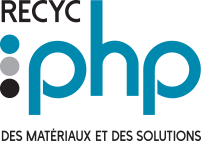

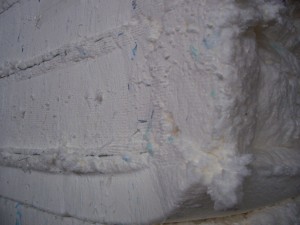
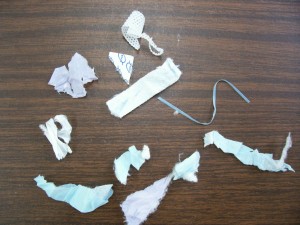
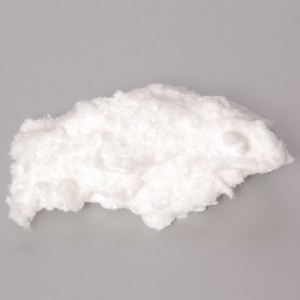

 1 819 477-1309
1 819 477-1309 Contact us
Contact us